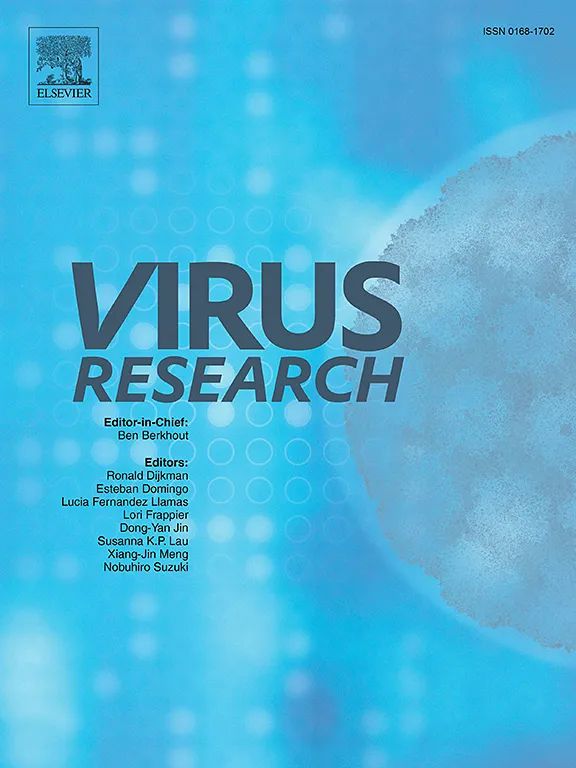Identification and evaluation of biomarkers for diagnosis of chronic hepatitis B using RNA-seq
IF 2.7
4区 医学
Q3 VIROLOGY
引用次数: 0
Abstract
Background & aim
Chronic hepatitis B (CHB) is a global public health problem affecting hundreds of millions of people and is associated with significant morbidity and mortality of liver cancer. Exosomes originate from cells and their detection in biofluids provides valuable insights into cellular and tissue alterations, thus reflecting underlying pathological states. The aim of this study was to provide exosomal RNA biomarkers of CHB and develop a machine learning model for the non-invasive diagnosis of CHB patients.
Methods
The differentially expressed genes (DEGs) were screened according to the RNA-seq data of normal and CHB liver tissues. The biomarkers were selected according to the analysis of pathway enrichment and functional annotation. The correlation of biomarkers’ expression level with the inflammation stage of CHB patients was analyzed. The non-invasive diagnostic value of the potential RNA biomarkers was evaluated by checking their different expression level in the plasma exosome of healthy individuals and CHB patients. A machine learning model was constructed to diagnose CHB by combining three identified biomarkers.
Results
A total of 1,006 differential expressed genes (569 upregulated and 437 downregulated) were screened between normal and CHB tissues. The GO and KEGG results showed the DEGs were mainly enriched in inflammation-related pathways. Among these genes, the expression of 4 upregulated genes and 27 downregulated genes showed consistent trends with the inflammation stage utilizing an independent CHB dataset. Three (PXN-AS1, RAD9A, SLC17A9) of 27 downregulated genes were found significantly decreased in plasma exosome of CHB patients. ROC analysis revealed that PXN-AS1, RAD9A and SLC17A9 exhibited moderate diagnostic performance in distinguishing CHB from healthy controls, with AUC values of 0.743, 0.762, and 0.665 respectively. A machine learning model, Adaboost classifier, was constructed to detect CHB by combining exosomal expression of PXN-AS1, RAD9A and SLC17A9. The AUC of the model was 0.983 and 0.924 for CHB detection in train and test dataset respectively.
Conclusion
Based on multiple RNA-seq data of tissues and plasma exosomes, we identified PXN-AS1, RAD9A, SLC17A9 as diagnostic biomarkers for CHB detection. The model based on three biomarkers showed potential diagnostic value for detecting CHB. Additional validation with a larger sample size is essential to thoroughly assess the reliability of these three biomarkers and the model's performance.
RNA-Seq诊断慢性乙型肝炎生物标志物的鉴定和评价。
背景与目的:慢性乙型肝炎(CHB)是影响数亿人的全球公共卫生问题,并与肝癌的显著发病率和死亡率相关。外泌体起源于细胞,它们在生物体液中的检测提供了对细胞和组织改变的有价值的见解,从而反映了潜在的病理状态。本研究的目的是提供CHB的外泌体RNA生物标志物,并开发用于CHB患者非侵入性诊断的机器学习模型。方法:根据正常和慢性乙型肝炎肝组织的RNA-seq数据筛选差异表达基因(DEGs)。根据途径富集分析和功能注释选择生物标志物。分析生物标志物表达水平与慢性乙型肝炎患者炎症分期的相关性。通过检测潜在RNA生物标志物在健康人与慢性乙型肝炎患者血浆外泌体中的不同表达水平,评价其无创诊断价值。结合三种已识别的生物标志物,构建了诊断CHB的机器学习模型。结果:共筛选到1006个差异表达基因,其中569个表达上调,437个表达下调。GO和KEGG结果显示,DEGs主要富集于炎症相关通路。在这些基因中,利用独立的CHB数据集,4个上调基因和27个下调基因的表达与炎症阶段一致。27个下调基因中的3个(PXN-AS1、RAD9A、SLC17A9)在CHB患者血浆外泌体中显著减少。ROC分析显示,PXN-AS1、RAD9A和SLC17A9对CHB与健康对照的诊断表现中等,AUC值分别为0.743、0.762和0.665。结合PXN-AS1、RAD9A和SLC17A9的外泌体表达,构建机器学习模型Adaboost classifier检测CHB。训练集和测试集CHB检测模型的AUC分别为0.983和0.924。结论:基于组织和血浆外泌体的多个RNA-seq数据,我们鉴定出PXN-AS1、RAD9A、SLC17A9是检测CHB的诊断性生物标志物。基于三种生物标志物的模型对检测慢性乙型肝炎具有潜在的诊断价值。为了彻底评估这三种生物标志物的可靠性和模型的性能,更大样本量的额外验证是必不可少的。
本文章由计算机程序翻译,如有差异,请以英文原文为准。
求助全文
约1分钟内获得全文
求助全文
来源期刊

Virus research
医学-病毒学
CiteScore
9.50
自引率
2.00%
发文量
239
审稿时长
43 days
期刊介绍:
Virus Research provides a means of fast publication for original papers on fundamental research in virology. Contributions on new developments concerning virus structure, replication, pathogenesis and evolution are encouraged. These include reports describing virus morphology, the function and antigenic analysis of virus structural components, virus genome structure and expression, analysis on virus replication processes, virus evolution in connection with antiviral interventions, effects of viruses on their host cells, particularly on the immune system, and the pathogenesis of virus infections, including oncogene activation and transduction.
 求助内容:
求助内容: 应助结果提醒方式:
应助结果提醒方式:


